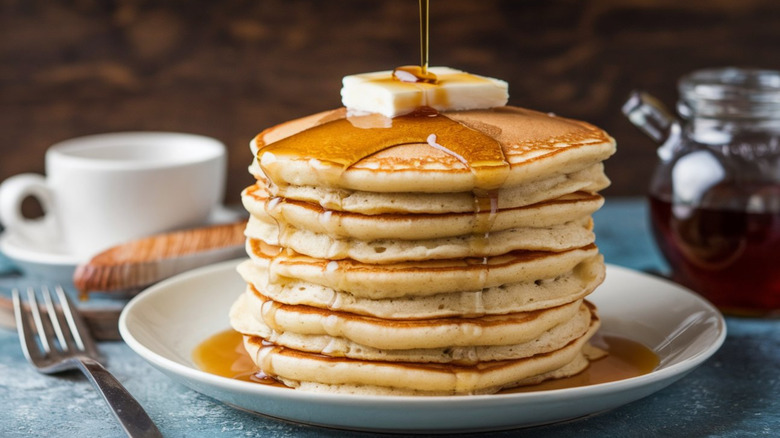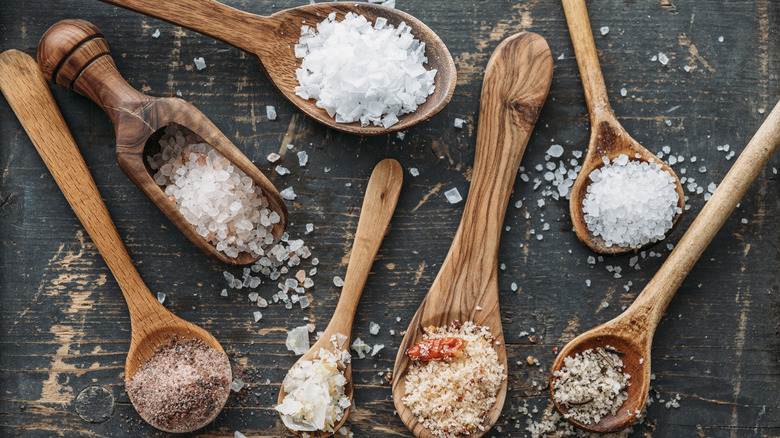The Single Ingredient That Gives Your Maple Syrup A Flavor Boost
Years ago, while in Barcelona, I stumbled into a restaurant called Cinc Sentits, or "Five Senses" (since then, the spot has garnered two Michelin stars). The meal started with an amuse-bouche in a shot glass: warm maple syrup contrasted with cold cream and cava sabayón, but the revelatory ingredient was the sea salt resting at the bottom of the glass. The tangy bite of the salt made the maple syrup come alive.
Every one of our taste buds has 50 to 100 taste cells, which are what register flavors, and these cells perceive the five tastes — sweet, salty, sour, bitter, and umami. According to a 2023 study, however, salt — specifically its chloride component — can directly interact with and activate sweet taste receptors, leading to an enhanced perception of sweetness. In the case of maple syrup, a dash of salt balances the sweetness, adds a savory note, and enhances and creates layers of flavor.
All maple syrup sold for retail is now classified as "Grade A" (the "Grade B" category no longer exists). However, within this "Grade A" classification, there are four distinct categories that differentiate syrups based on their color and corresponding flavor intensity. Choosing your favorite maple syrup is largely a matter of taste, but regardless of which one you use, adding one of the myriad types of salt can give it a remarkable flavor boost. Many chefs prefer flaky sea salts, like Maldon or fleur de sel. These add a bright burst of flavor and a textural crunch. Unflavored sea salt, however, would be ideal to sprinkle judiciously on top of your syrup-adorned pancakes to truly make that maple flavor sing.
Maple syrup and salt pairing ideas
While plain, high-quality sea salt is a workhorse (and would pair great with roasted maple balsamic pears), flavored styles offer an intriguing profile as well. Try kicking up maple-roasted carrots and parsnips with a sprinkle of smoked sea salt. Go with maple-on-maple flavor and accent maple barbecue ribs or maple cake frosting with maple salt. You could even play with black lava salt, whose striking color and slight smokiness would create interest sprinkled atop a sundae slathered in an easy two-ingredient caramel sauce made with maple syrup and olive oil.
Salts to avoid include crunchy, large-grain rock salt, as well as iodized salt, which is processed and often tastes metallic. The key takeaway here is that you want to elevate the sweet flavor of the dish you're adorning with maple syrup, so a light flake, a burst of salinity, and a gentle crunch are crucial. These characteristics will take your maple syrup to the next level and create a taste bud–teasing flourish on top of your dish.


